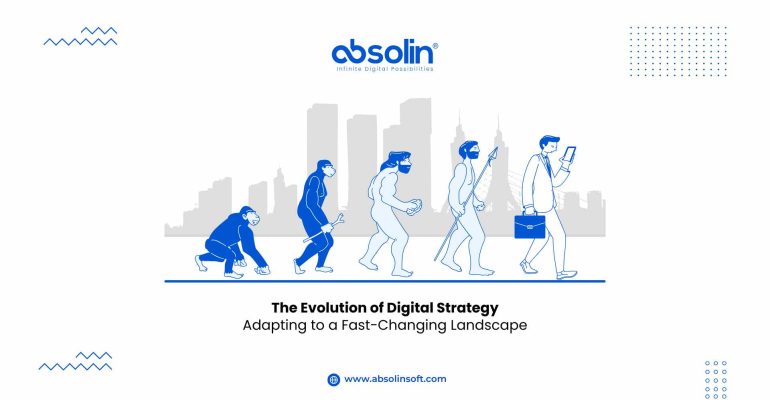The Evolution of Digital Strategy: Adapting to a Fast-Changing Landscape
In the early days of the internet, having a website was a novelty—a digital brochure to prove your business existed. Fast forward to today, and the web is no longer just a platform—it’s the primary battleground for relevance, survival, and growth. Businesses don’t just operate online; they live and evolve there.
What began as a static presence has morphed into a dynamic digital ecosystem of platforms, data, technologies, and experiences. It’s no longer enough to “have” a digital strategy. You need to continuously evolve it—because the digital landscape doesn’t pause, and neither do your competitors or customers.
This blog explores how digital strategy has transformed over the years, what’s driving the current wave of change, and how businesses can adapt to not just keep up—but lead the way.
1. The Origins: Digital Strategy 1.0 – The Age of Presence
In the late 1990s and early 2000s, the digital strategy was simple:
➡️ Build a website.
➡️ Maybe launch an email newsletter.
➡️ Done.
The focus was on basic visibility. The internet was treated like a digital yellow pages, and businesses rarely updated their sites unless absolutely necessary. User interaction was limited, and data was mostly an afterthought.
🔹 Goal: Establish presence
🔹 Tools: Static websites, email marketing, SEO
🔹 Mindset: “We need to be online.”
2. Digital Strategy 2.0 – The Age of Interaction and Social Shift
As broadband became common and Web 2.0 took over, the internet became interactive. Suddenly, users could comment, share, and engage, and businesses had to move from broadcasting to conversing.
Social media changed the game. Digital strategy now included managing Facebook pages, tweeting customer support, and building brand personas online.
🔹 Goal: Engagement and community
🔹 Tools: Social media, blogs, mobile apps
🔹 Mindset: “We need to be where our users are.”
3. Digital Strategy 3.0 – The Age of Data and Personalization
By the mid-2010s, the rise of big data and analytics transformed digital strategy into a science. Businesses could now track behavior, predict trends, and personalize every interaction.
Content became tailored. Ads followed users around the web. UX and CRO (Conversion Rate Optimization) became mission-critical. Decisions were now data-driven rather than gut-feeling based.
🔹 Goal: Personalization and conversion
🔹 Tools: Google Analytics, CRMs, marketing automation, AI-powered recommendations
🔹 Mindset: “We need to know our users better than they know themselves.”
4. Digital Strategy 4.0 – The Platform Era and Ecosystem Thinking
Today, digital strategy is no longer about discrete channels. It’s about creating cohesive digital ecosystems—connected platforms, seamless experiences, and omnichannel journeys.
Your website, mobile app, CRM, social profiles, ecommerce system, AI chatbots, and backend systems all need to speak the same language. Customers expect continuity whether they interact with you via Instagram, email, or a mobile app.
🔹 Goal: Integrated, scalable digital experiences
🔹 Tools: Headless CMS, cloud-native apps, APIs, CDPs, omnichannel platforms
🔹 Mindset: “We need to think holistically and move fast.”
5. Drivers of Change in Digital Strategy
🚀 Customer Expectations
Modern users are empowered and impatient. They want instant support, personalized offers, and consistent experiences—on any device, at any time.
🌐 Technology Innovation
AI, automation, cloud computing, AR/VR, and blockchain are reshaping how businesses connect, operate, and deliver value.
📊 Data Privacy and Regulation
As data becomes more regulated (think GDPR, CCPA), strategies must strike a balance between personalization and privacy.
⚡ Speed of Market Disruption
New players can disrupt entire industries in months, not years. Think Uber, TikTok, or ChatGPT. Agility is no longer optional—it’s strategic oxygen.
6. Key Pillars of a Modern Digital Strategy
To thrive in the current landscape, your digital strategy should focus on:
1. User-Centric Design
Design everything around the customer—experience, functionality, timing.
2. Data-Driven Decision Making
Leverage analytics and real-time insights to guide every strategy, from marketing to product development.
3. Platform Integration
Ensure all digital tools and channels work together to create a seamless experience.
4. Continuous Innovation
Adopt agile methodologies. Test, learn, iterate. Your strategy should evolve weekly—not yearly.
5. Cybersecurity and Compliance
Build trust by securing data, being transparent, and complying with evolving regulations.
7. Building an Adaptive Digital Strategy: How to Stay Ahead
The digital future belongs to those who can adapt, pivot, and scale quickly. Here’s how to keep your strategy future-proof:
- Audit regularly: Technology, customer behavior, and platforms evolve constantly. Reevaluate your tools and channels quarterly.
- Invest in flexible infrastructure: Cloud-based, API-first, and modular platforms allow you to adapt fast.
- Upskill your team: Equip your staff with digital fluency, analytics literacy, and agile thinking.
- Embrace experimentation: Treat every campaign as a hypothesis to test, not a final decision.
- Track KPIs that matter: Don’t drown in vanity metrics—focus on outcomes, not outputs.
Conclusion: Digital Strategy Is Not a Destination—It’s a Discipline
Digital strategy isn’t a one-time project. It’s a living, breathing framework that evolves alongside your business, customers, and technology. The companies that win in the digital age aren’t the biggest—they’re the most adaptable, the most data-smart, and the most committed to user-first thinking.
The question isn’t whether your strategy will need to evolve. The question is: Are you ready to evolve with it?
Ready to redefine your digital strategy or future-proof your digital stack? Let’s explore what evolution looks like for your business.



